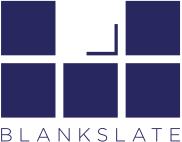Health & Safety: Hygiene and Disease Prevention in the Workplace FAQs
As an employer, what is my main responsibility from a Health & Safety point of view during this COVID-19 situation?
Your main responsibility as an employer is to take any reasonable steps to ensure health & safety regarding hygiene and disease prevention in the workplace. Regarding which steps are specifically needed for your specific business or industry, you must adhere to the guidelines issued by the BC’s health officer and the BC Centre for Disease Control.
Are there any specific Health & Safety measures to prevent worker exposure or other hygiene and disease prevention in the workplace measures I should know?
First, identify whether your workplace is considered an essential service or not. If it is an essential service, the BC’s health office has created specific guidelines to ensure the safety of workers and others at those workplaces. Should your work not be considered essential, then evaluate if you can have your workforce working remotely to minimize their risk. When remote work is not possible, then: Ensure employees under the following circumstances do not come into work:
- Employees with COVID-19-like symptoms such as sore throat, fever, sneezing, or coughing. If they show up these signs, they must self-isolate at home for a minimum of 10 days from when the symptoms started until these are resolved.
- Employees who travelled internationally must remain away from the workplace for at least 14 days.
- Employees who live in the same household as confirmed COVID- 19 cases must also self-isolate.
- Ensure there is at least a two-meter distance between people. You can achieve this by revising your work schedules, organizing job tasks, posting occupancy limits, and limiting the number of employees at one time during break times.
- Provide adequate hand-washing facilities which are clearly visible and easily accessed. Make sure all common areas and surfaces, such as washrooms, shared offices, common tables, desks, light switches, and door handles are regularly cleaned.
Are there any general Health& Safety guidelines on what measures to control exposure should we be following?
Yes, there are guidelines to control exposure set out by WorkSafe BC which have been in place even before COVID-19. If you need to implement exposure control measures, they should be developed in conjunction with your health & safety committee (if you have one), and must start at the top of the following hierarchy. You may choose a less effective safeguard only when more effective solutions are impractical.
Hierarchy of Controls:
Elimination or Substitution:
This involves removing the risk of exposure entirely from the workplace. This could involve postponing, re- organizing, or planning work in such a way that workers are not exposed to any risk. Having workers work remotely is an example of eliminating the risk from the workplace.
Engineering controls:
These are physical changes in the workplace, such as installing plexiglass barriers in a grocery store. Separating workstations with dividers, or adding sanitizing stations to entrances.
Administrative controls:
This involves altering work practices to minimize exposure, such as minimizing the numbers of customers inside grocery stores, staggering work shifts, making virtual appointments, keeping two-meter distance between people, etc. In the office space, this could be staggering lunch breaks or closing lunch rooms and kitchens. Limiting how many people can be in a board room.
Personal protective equipment (PPE):
This last form of protection should only be considered after careful consideration of the previous control measures. Some workplaces have specific requirements for PPE, such as in health care settings.
What else can I do as an employer to minimize the risk to my staff?
This is a great opportunity to educate your team members. Don’t underestimate the power of following basic hygiene principles.
Some of the topics to talk to your employees about include:
- Hand washing: The most important thing that can be done to prevent infection and protect loved ones is to wash your hands regularly and avoid touching your face, particularly eyes, nose and mouth. Wash your hands with soap and water for at least 20 seconds. When soap and water aren’t available, use alcohol-based hand rubs. (As long as your hands aren’t visibly soiled.)
- Be careful when sneezing or coughing: Cover your mouth and nose with a disposable tissue or the inside of your elbow when you sneeze or cough.
- Physical distancing: Keep a minimum of 2 meters distance between yourself and others. Do not share food, drinks, utensils, etc.
- Cleaning and disinfecting: Regularly clean and disinfect frequently touched surfaces with regular, household cleaning products.
When there is an easement of the current measures, how do handle the return to work of my staff?
Watch this space for more to come here. It will depend on which specific measures are being relaxed, as well as what industry your business is in. BLANKSLATE Partners are experienced professionals who can asses your needs and make recommendations. To talk to a qualified HR Professional reach out today.
